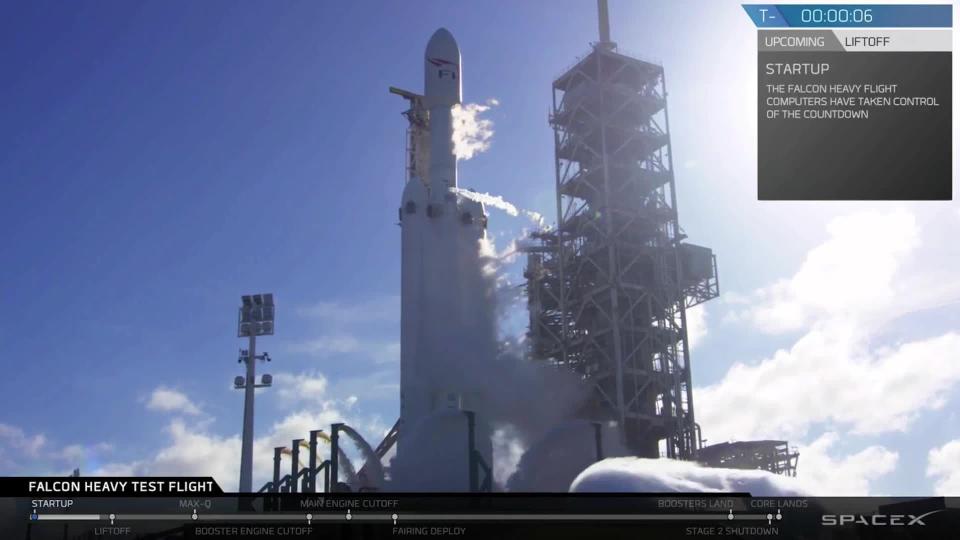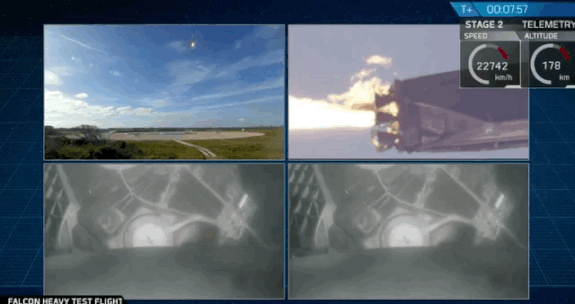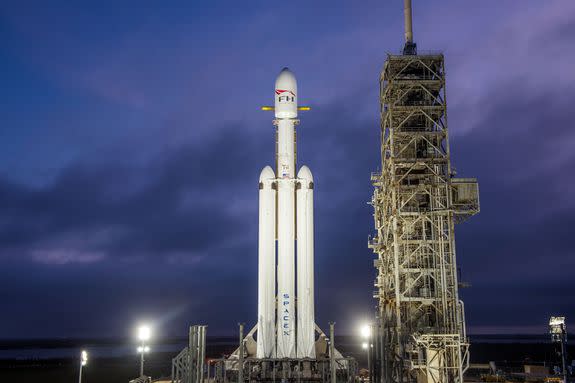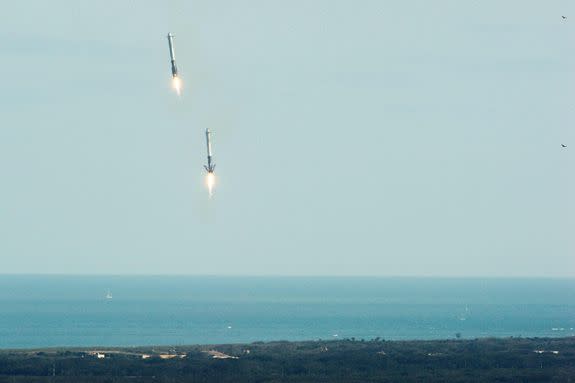SpaceX just landed two Falcon Heavy rocket boosters back on Earth, but the third didn't make it


After SpaceX successfully blasted its Falcon Heavy mega-rocket into outer space today, two of the rocket's three boosters turned around, plummeted through the atmosphere, and landed back on Earth.
SpaceX later revealed that the third booster didn't land on its done ship in the Atlantic Ocean as expected. Instead it crashed into the ocean at about 300 miles per hour, according to SpaceX founder Elon Musk.
SpaceX provided a live webcast of the unprecedented launch and double landing, which can be watched above. About eight minutes after liftoff, two of the boosters landed back on land, in Florida. The third booster was expected to land around 20 seconds later on a SpaceX drone ship bobbing 300 miles off the coast in the Atlantic Ocean.
SpaceX seemed to have lost the feed from the drone ship as the third and final booster was expected to land.
SEE ALSO: SpaceX's Falcon Heavy launch will make you excited about spaceflight again
In the last couple years, SpaceX has started bringing an expensive and critical component of its Falcon 9 rockets back to Earth — the rocket booster which contains nine engines. Few rockets on Earth are currently capable of this landing feat, which enables SpaceX to reuse rockets and substantially lower the cost of launching spacecraft and cargo into space. In fact, the two rocket boosters that just landed together (shown below), had already previously landed back on Earth after sending payloads into space.

Image: spacex
But never before has SpaceX landed rocket boosters together.

Image: spacex
Most other rockets, like NASA's forthcoming Mars-bound Space Launch System, are not reusable, meaning the entire massive rocket needs to be rebuilt for each launch. But other private rocket companies recognize the necessary economy is building reusable rockets.
Jeff Bezos' rocket company, Blue Origin, has already successfully landed a rocket back on Earth. This West Texas landing, however, was a test. SpaceX is already blasting government satellites and space station cargo into space — and bringing the boosters back.

Image: JIM WATSON/AFP/Getty Images
With today's twin-booster landing — and potentially a triple landing — SpaceX showed that it can make longer and deeper missions into space cheaper. Getting back to the Moon and visiting Mars will be inherently expensive (especially as return missions add up) — but with these remarkable rocket innovations, perhaps not prohibitively so.

